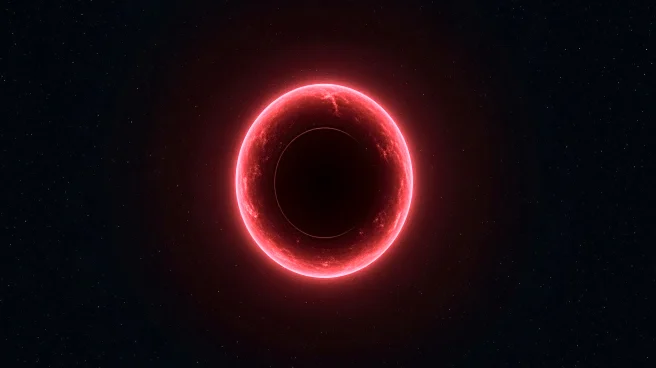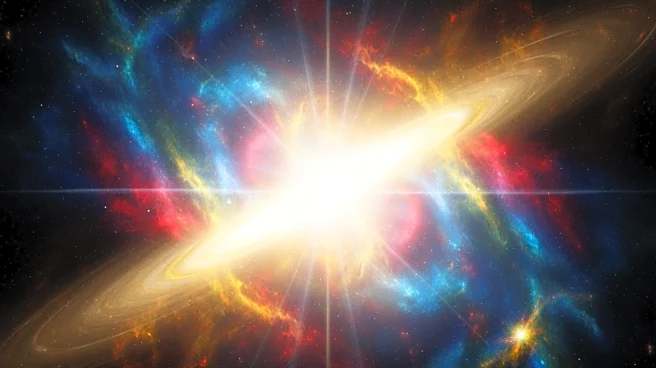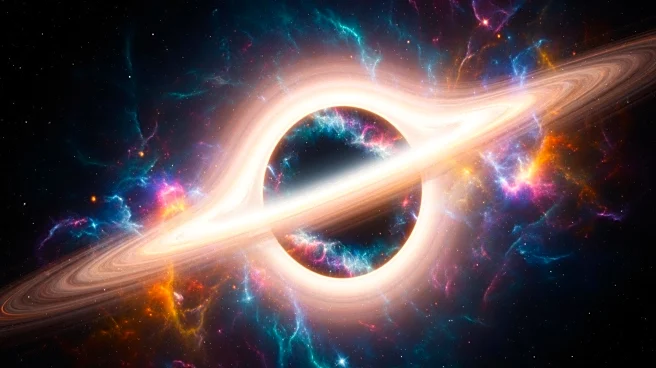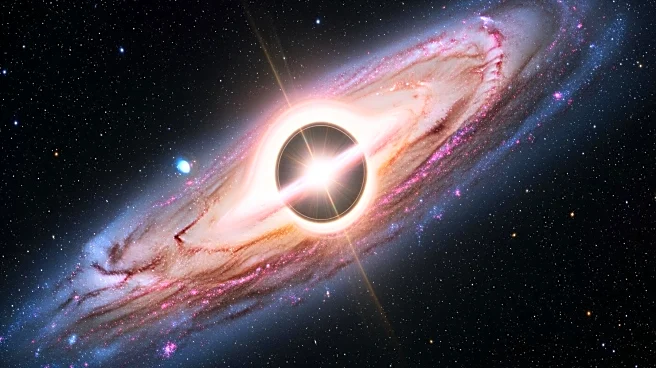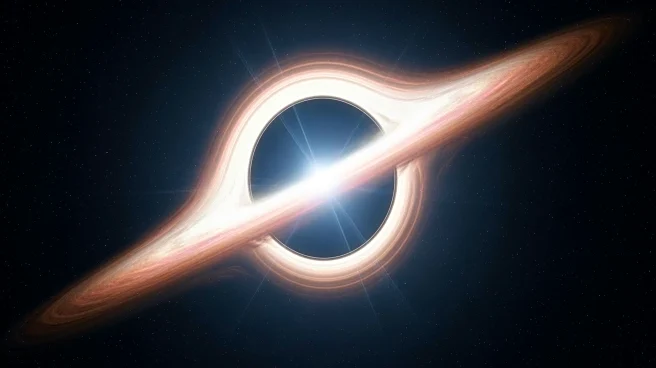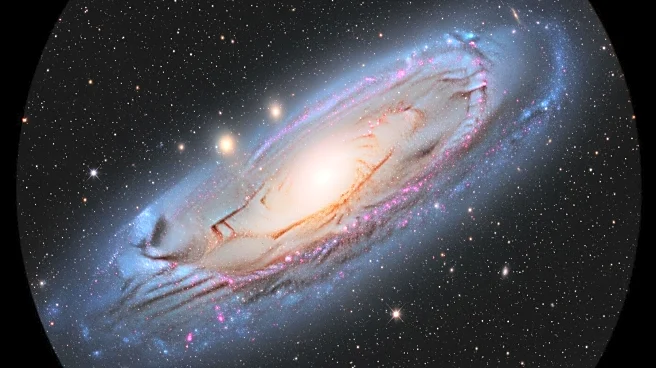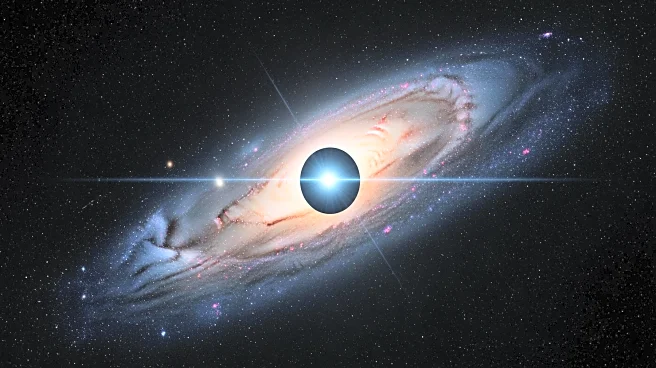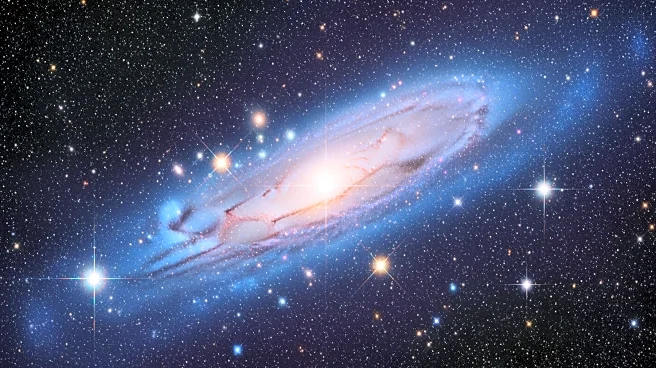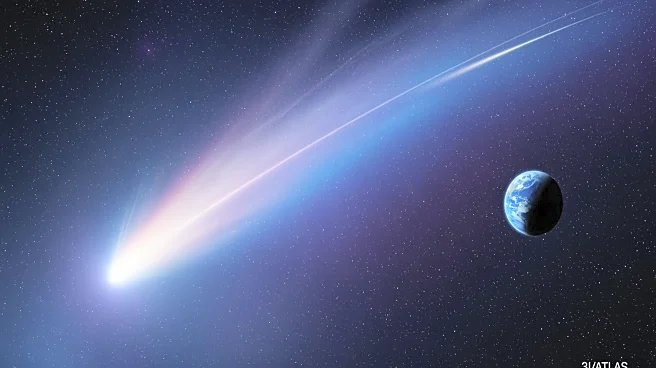What's Happening?
The James Webb Space Telescope has discovered a supermassive black hole, dubbed 'BiRD' (Big Red Dot), during a period known as 'cosmic noon.' This black hole, with a mass equivalent to 100 million Suns,
is part of a collection of objects called 'little red dots.' BiRD was found near the quasar J1030+0524, located 12.5 billion light-years from Earth. The discovery provides insights into the growth of supermassive black holes and challenges existing theories about their evolution.
Why It's Important?
The identification of BiRD and other 'little red dots' offers new perspectives on the formation and growth of supermassive black holes. These objects may represent massive black hole 'seeds,' providing clues about the early universe's dynamics. The discovery challenges previous assumptions about the disappearance of such objects during cosmic noon, suggesting they remained numerous during this epoch. This research contributes to the understanding of black hole evolution and the role of cosmic phenomena in shaping the universe.
What's Next?
Researchers plan to extend their study to more 'little red dots' to build a comprehensive picture of these objects and their significance in cosmic evolution. The James Webb Space Telescope will continue to explore the early universe, potentially uncovering more supermassive black holes and refining theories about their growth. The findings may lead to new models of black hole formation and influence future astronomical research. Continued observations will enhance the understanding of the universe's history and the forces shaping it.
